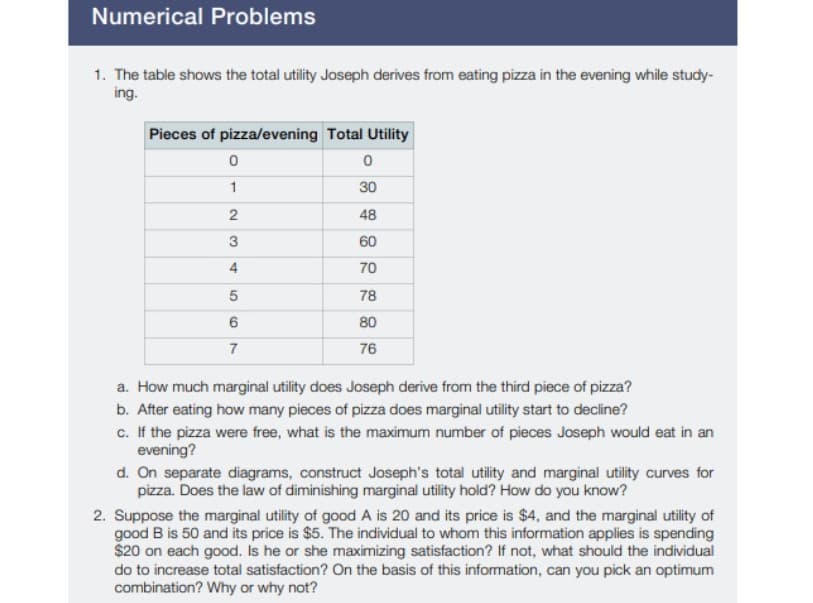2. Suppose the marginal utility of good A is 20 and its price is $4, and the marginal utility of good B is 50 and its price is $5. The individual to whom this information applies is spending $20 on each good. Is he or she maximizing satisfaction? If not, what should the individual do to increase total satisfaction? On the basis of this information, can you pick an optimum combination? Why or why not?
2. Suppose the marginal utility of good A is 20 and its price is $4, and the marginal utility of good B is 50 and its price is $5. The individual to whom this information applies is spending $20 on each good. Is he or she maximizing satisfaction? If not, what should the individual do to increase total satisfaction? On the basis of this information, can you pick an optimum combination? Why or why not?
Microeconomics A Contemporary Intro
10th Edition
ISBN:9781285635101
Author:MCEACHERN
Publisher:MCEACHERN
Chapter6: Consumer Choice And Demand
Section: Chapter Questions
Problem 2QFR
Related questions
Question
I need help with question 2 please

Transcribed Image Text:Numerical Problems
1. The table shows the total utility Joseph derives from eating pizza in the evening while study-
ing.
Pieces of pizza/evening Total Utility
30
2
48
60
70
78
80
7
76
a. How much marginal utility does Joseph derive from the third piece of pizza?
b. After eating how many pieces of pizza does marginal utility start to decline?
c. If the pizza were free, what is the maximum number of pieces Joseph would eat in an
evening?
d. On separate diagrams, construct Joseph's total utility and marginal utility curves for
pizza. Does the law of diminishing marginal utility hold? How do you know?
2. Suppose the marginal utility of good A is 20 and its price is $4, and the marginal utility of
good B is 50 and its price is $5. The individual to whom this information applies is spending
$20 on each good. Is he or she maximizing satisfaction? If not, what should the individual
do to increase total satisfaction? On the basis of this information, can you pick an optimum
combination? Why or why not?
4)
Expert Solution
This question has been solved!
Explore an expertly crafted, step-by-step solution for a thorough understanding of key concepts.
This is a popular solution!
Trending now
This is a popular solution!
Step by step
Solved in 2 steps

Knowledge Booster
Learn more about
Need a deep-dive on the concept behind this application? Look no further. Learn more about this topic, economics and related others by exploring similar questions and additional content below.Recommended textbooks for you


Exploring Economics
Economics
ISBN:
9781544336329
Author:
Robert L. Sexton
Publisher:
SAGE Publications, Inc



Exploring Economics
Economics
ISBN:
9781544336329
Author:
Robert L. Sexton
Publisher:
SAGE Publications, Inc



Principles of Economics 2e
Economics
ISBN:
9781947172364
Author:
Steven A. Greenlaw; David Shapiro
Publisher:
OpenStax
